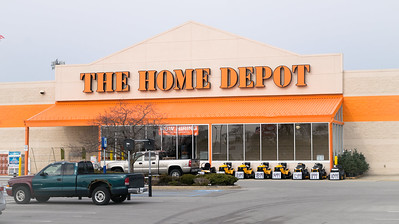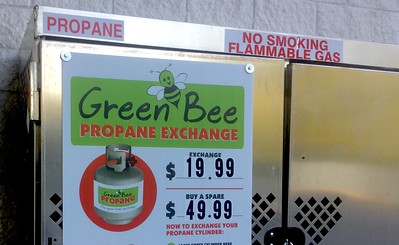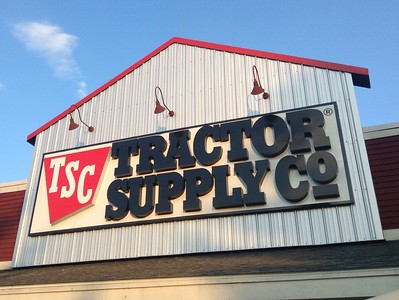
Propane tank exchange programs offer a convenient and efficient way to replace empty propane tanks with full ones. These programs are commonly available at various retailers, including home improvement stores, gas stations, and supermarkets. Here’s a step-by-step guide on how propane tank exchange programs typically work:
- Locate a propane tank exchange location: First, identify a retailer or facility that offers propane tank services. Many major retailers provide this service, and you can usually find a propane tank exchange kiosk or cage outside their storefront.
- Bring your empty propane tank: Transport your empty propane tank to the location. Ensure that the tank is in good condition, free from damage or excessive rust, and the valve is fully closed.
- Pay the fee: At the location, you will typically be asked to pay a fee for the full tank. This fee covers the cost of the propane gas and the service. Prices may vary depending on the retailer and location.
- Hand over your empty tank: Present your empty propane tank to the staff or place it in the designated area, following the retailer’s instructions. They will inspect the tank to ensure it is safe for reuse.
- Receive a full propane tank: Once the staff has accepted your empty tank, they will provide you with a pre-filled propane tank in exchange. This tank will have been inspected, tested, and refilled by the propane supplier, ensuring it is safe for use.
Transport and store the full tank safely: When taking the full propane tank back to your home or intended use location, make sure to transport it safely in an upright position, secured to prevent movement, and with adequate ventilation. Store the tank in a well-ventilated area away from heat sources, ignition sources, and direct sunlight.
How Much Does it Cost
The cost of participating in a program can vary depending on the retailer, location, and market conditions. Generally, the cost to exchange a standard 20-pound propane tank ranges from $18 to $25. This price includes the propane gas and the convenience of the exchange service.
Keep in mind that the initial purchase of a propane tank will have an additional cost, which may range from $30 to $50. After this initial purchase, you’ll only need to pay the fee each time you replace an empty tank with a full one.
It’s essential to compare prices at different retailers and consider other factors such as convenience, service quality, and propane purity. Some consumers may find it more cost-effective to refill their propane tanks at a propane filling station instead of using the program. Refilling a propane tank typically costs less per gallon than exchanging, but it may require additional time and effort.
Remember that the costs mentioned above are for standard 20-pound propane tanks commonly used for grilling and other household purposes. Single-use green propane bottles or other types of propane cylinders may have different costs associated with them.
You Can Also Exchange at Automatic Propane Cabinet Located in Some Locations
in some locations, you can find automatic propane cabinets or kiosks that allow you to exchange your empty propane tanks for full ones without any assistance from store personnel. These self-service stations provide a convenient, quick, and efficient way to obtain a full propane tank, often available 24/7.
To use an automatic propane cabinet:
- Locate a cabinet or kiosk: Find a retailer or facility that offers self-service exchange services. These kiosks are usually placed outside storefronts in a designated area.
- Follow the on-screen instructions: Each cabinet or kiosk will have a user interface with instructions to guide you through the process. Begin by selecting the appropriate propane tank size and type.
- Pay for the exchange: Insert your payment method (usually a credit or debit card) and complete the transaction as prompted. The exact payment process may vary depending on the kiosk.
- Swap your empty tank: Open the cabinet door, place your empty propane tank in the designated area, and then take out the full propane tank provided. Ensure the full tank is in good condition and securely closed.
- Close the cabinet: After retrieving the full propane tank, close the cabinet door and ensure it is locked.
- Transport and store the full tank safely: transport the full propane tank in an upright position, secured to prevent movement, and with adequate ventilation. Store the tank in a well-ventilated area away from heat sources, ignition sources, and direct sunlight.
Automatic propane cabinets offer a convenient option for consumers who need to exchange their propane tanks outside regular store hours or prefer a contactless experience. Remember to handle the propane tanks with care and follow safety guidelines throughout the process.
How to Find a Propane Retailer That Exchange Propane Tanks
Finding a propane retailer that offers these services is relatively easy, as many major retailers and facilities provide this service. To locate a propane retailer, consider the following methods:
Start by searching online for locations in your area. You can use search engines like Google or Bing to find nearby retailers that offer this service. Additionally, you can visit the websites of major propane suppliers, such as Blue Rhino or AmeriGas, which often provide a location finder tool to help you identify participating retailers in your vicinity.
Another approach is to ask for recommendations from friends, family, or neighbors who have used such services. They may have suggestions for retailers that offer reliable and convenient exchange programs.
Pay attention to propane tank kiosks or cages when visiting local retailers, such as home improvement stores, gas stations, and supermarkets. These cages or kiosks are usually placed outside storefronts and are a clear indication that the retailer offers these services.
If you’re still unsure, you can directly call or visit nearby retailers to inquire about their programs. This allows you to gather information about their specific policies, requirements, and fees.
By using a combination of online searches, recommendations, and direct inquiries, you can easily locate a propane retailer that offers these services, ensuring a continuous supply of propane for your needs while contributing to responsible handling and recycling of propane tanks.
In Conclusion
Propane tank exchange programs provide a convenient and efficient way for consumers to replace their empty propane tanks with full ones. Available at various retailers and facilities, these programs promote responsible handling and recycling of propane tanks, reducing waste and environmental impact. The process typically involves locating a location, paying the fee, handing over your empty tank, and receiving a full propane tank in return. In some locations, automatic propane cabinets or kiosks are available, offering a self-service, contactless option for propane tank exchanges.
By participating in the programs, consumers can ensure a continuous supply of propane for their needs while contributing to a more sustainable and eco-friendly environment.

Mike is an experienced propane technician with over 15 years of professional experience in the field. He has dedicated his career to helping customers with their propane needs, from installation to maintenance and repair. Together with Jeremy, he co-founded this website to provide useful information and guidance to customers seeking reliable propane services.




